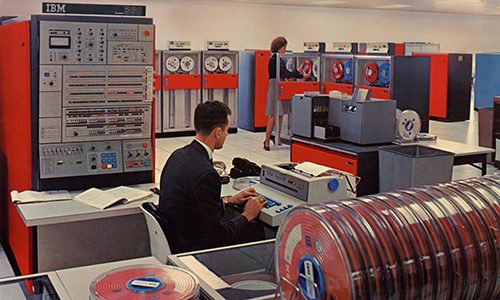The flexible consumption model (FCM)—or as we know it—the everything-as-a-Service (XaaS) model, has steadily, but modestly, taken a larger portion of network infrastructure budgets over the past 10 years. But now, it’s on the rise in a far greater way. An increasing number of companies have expanded (or completely shifted) to the XaaS model in response to new demands, and dropping costs.
It’s not really much of a surprise to see this sort of “pay as you go” IT model really take off. But what is interesting is how specialized as-a-service models have emerged, from Communications-as-a-Service (CaaS), to Disaster-Recovery-as-a-Service (DRaaS), to our topic today: Network-as-a-Service (NaaS).
It’s a tempting offer: Who wouldn’t want to be able to have a network tailored to their business needs up and running within days, or even hours, without any sweat equity or massive investments in physical costs (and housing them, and powering them, and maintaining them, etc.)?
Sounds a little hard to believe, right? An entire network infrastructure, available on demand? Let’s talk about NaaS, what it is, and why it’s so attractive to business right now.
What is Network-as-a-Service?
Brandon Butler, Research Manager with IDC, describes NaaS as a business that offers customers access to, “integrated hardware, software, licenses, and support services delivered in a consumption, or subscription-based, offering.”
In other words, NaaS provides companies with a fully functioning network, and all the software to run on it, without the need to build or maintain it themselves. Instead, they pay a monthly fee for everything they need and use, from design and setup, to storage, integrations and other vital network services (such as limited network monitoring).
Flexibility is one of the key drivers for any as-a-service business, and that also applies to NaaS. Customers can opt for varying levels of service, such as:
- Hardware-only: leasing physical hardware from the service provider, but clients handle installation and operation. This is typically done on-premise.
- Managed services: leasing the hardware, but also paying the provider for operation services. This is typically done off-premise.
- Full-service NaaS: clients pay the provider a monthly fee for a complete service that includes hardware rental, installation, and operation.
The first two options might be considered hybrid models, rather than true Network-a-a-Service. However, all options offer solutions that shift costs, speed implementation and allow companies to access hardware-as-a-service rather than having to invest in it themselves.
What’s driving NaaS adoption?
Though NaaS solutions were already gaining ground, it was the COVID-19 pandemic that accelerated its adoption, as companies were forced to deal with the wide-scale disruptions to business as usual. Two big factors included A sudden and major shift to remote working, and a global recession, requiring the need to cut costs to remain competitive
Shifting to remote work
COVID-19 lockdowns meant companies had to find ways for their employees to work from home, and most didn’t have the necessary networking infrastructure. And even those that did, often didn’t have the capacity to handle the spiking network traffic. At least, not securely.
Let’s be realistic, in March 2020, most of us were just trying to figure out how to get laptops to employees. The entire pivot from in-house networks to accommodating dozens, to hundreds, of employees logging in from unknown connections (and for a while, unknown devices) was work enough!
Other factors, such as the lack of expertise in distributed network management, and a network traffic monitoring solution geared towards remote environments, were also serious considerations.
This is where NaaS provided a big advantage. Companies that turned to NaaS were up and running far quicker than their counterparts. NaaS providers had the expertise and capability to quickly deploy adaptable networking solutions that could easily be scaled up or down based on the needs of the business.
Secure network access, coupled with rapid onboarding for employees, also meant IT teams no longer had to worry about ad hoc connections, or trying to scale up their staff during a crisis.
This is still one of the main draws of Network-as-a-Service and why it will continue to rise in popularity: Businesses get the networks they need without the hassle.
NaaS and need for cost reductions
The pandemic sent the world into a recession, with some sectors suffering more than others. As a result, a general concern became cutting costs, so businesses could price competitively to survive.
NaaS, once again, provided an alternative to many companies. Attempting to build (or rebuild) networks needed to support the majority of their employees working remotely would mean a significant spike in capital spending. And the pandemic laid bare a fact: a lot of companies don’t have cash lying around for rainy days.
But with Network-as-a-Service, the spending shifts to operational expenses that companies could write off immediately. Furthermore, there is no initial investment required, which helped with cash flow management.
In a time when no one knew what would happen in the next hour, let alone tomorrow or a year down the line, effective cash flow management was more critical than ever before.
A recent study by Forrester for Dell revealed that 64% of IT leaders accelerated the transfer of their CapEx spending to OpEx in 2020, and looked to flexible consumption models for their future IT needs.
No matter how revolutionary we might like to think we are, as-a-service offerings in IT have been around since the 1960s, when computers were far too large and expensive for small and mid-sized businesses. This led to the rise of the Software-as-a-Service industry, then called “time-sharing systems”, which contracted when the size and cost of computers plummeted as technology evolved.

What’s next for NaaS adoption?
Does that mean that NaaS growth will slow down with the end of the pandemic? Far from it. Companies have discovered the benefits of this model, even if they were forced into it by the situation. According to IDC’s NaaS survey, 40.8% of respondents stated they would turn to flexible consumption to pay for its IT and network assets in their next procurement cycles, and 22.2% said they would lease, compared to 37% who planned on purchasing their own equipment outright.
Advantages of the NaaS model
Increased efficiencies
With the NaaS model, companies only pay for what they use, and can quickly expand capacity as the business grows. With an on-premise network, companies must constantly undertake upgrades to their equipment, fix bugs, implement patch management, evaluate security, etc.
It takes up time IT staff could be spending on more mature processes, because they often have to travel to multiple locations to maintain a physical network, and have to repeat low-level tasks over and over.
With Network-as-a-Service, though, these issues become tasks for your provider to manage. Fixes are implemented promptly, and service providers constantly deliver new features and capabilities. This approach also automates a wide range of processes, including new-user onboarding, and optimizing the network for peak performance. Offloading all that support an on-premise network demands, and you can see how it makes sense for an agile business that doesn’t already have a system in place to externalize a lot of this work, and shifting the in-house team’s focus to monitoring the overall network health and endpoint performance, rather than the on premise devices.
Improved security
NaaS providers improve security by offering on-premises and cloud-based constantly up-to-date security parameters tailored to the needs of every business. In other words, they work with their clients to ensure they have the best hardware and software solutions for their needs, while also applying the best practices for IT security.
Flexibility
NaaS is far more flexible than traditional networking infrastructure, because it’s delivered through the cloud. Network changes can typically be made through software rather than the hardware, which can most often be done via self-service portals.
For example, a company’s IT team can reconfigure the network to add a new branch location quickly and easily, without the need for expensive investments or time-consuming implementation.
Improved experience
Network-as-a-Service providers can ensure that users have the same experience accessing an app as if it were hosted in-house, intelligently routing app traffic to make sure that users aren’t encountering capacity or slowdown issues during peak times.
Scalability
Companies can scale their networks with NaaS far more efficiently than with traditional infrastructure. Instead of a 30 or 60 day cycle, all customers need to do is (at most) contact the provider instead of investing in new hardware that needs to be deployed, configured, and secured. It’s really that dead simple.
Insights
NaaS still allows for your own network monitoring and insights, though to a lesser degree than a full fledged solution like Auvik would provide. Many NassS solutions have some application for clients to see limited insights and statistics on users connected, network usage, and apps and licenses currently in use.
How is NaaS implemented and managed?
How you implement and manage a NaaS largely depends on what services you want to offer and what model you want to adopt.
You could, for example, take a comprehensive route. Companies like Cisco have new Network-as-a-Service options that offer various network components like data-center usage, networking infrastructure, and storage, along with third-party software and storage solutions, which customers can control through Cisco’s Intersight cloud-management package.
Another approach is to enlist specialists, like Megaport or PacketFabric. These companies own the infrastructure, but instead of full-service options, their offerings are narrower, focusing on individual tasks, such as point-to-point, cloud-to-cloud, and hybrid connectivity. Their pitch? Do one thing, and do it well: super fast, reliable connections that can scale up or down as needed.
NaaS vs. on-premises solutions
On-premises networks will be around for a very long time. While NaaS is an excellent solution for small to mid-size companies, things get a little more complex at the enterprise level.
Yes, NaaS might offer a wide range of benefits, including lower capital costs and improved efficiencies, but this may not matter as much at the enterprise level that already have the human and equipment infrastructure in place.
Furthermore, it’s going to be a long time before the majority of enterprises give up what they see as complete control over their networks, even if it means a better bottom line.
One eventual possibility is a move to the hybrid Network-as-a-Service model where clients lease the equipment from MSPs. In this case, the hardware would be located on-premises, meaning that the enterprise could retain a more secure stance of physically possessing the hardware, and not having to rely solely on cloud-based solutions for their networking needs.
Whether you’re considering Network-as-a-Service as your next solution, sticking with on-prem, or a hybrid approach, Auvik is ready to help. Give us a try for 14-days, risk free, and see what kind of benefits true network visibility brings to your system today!



